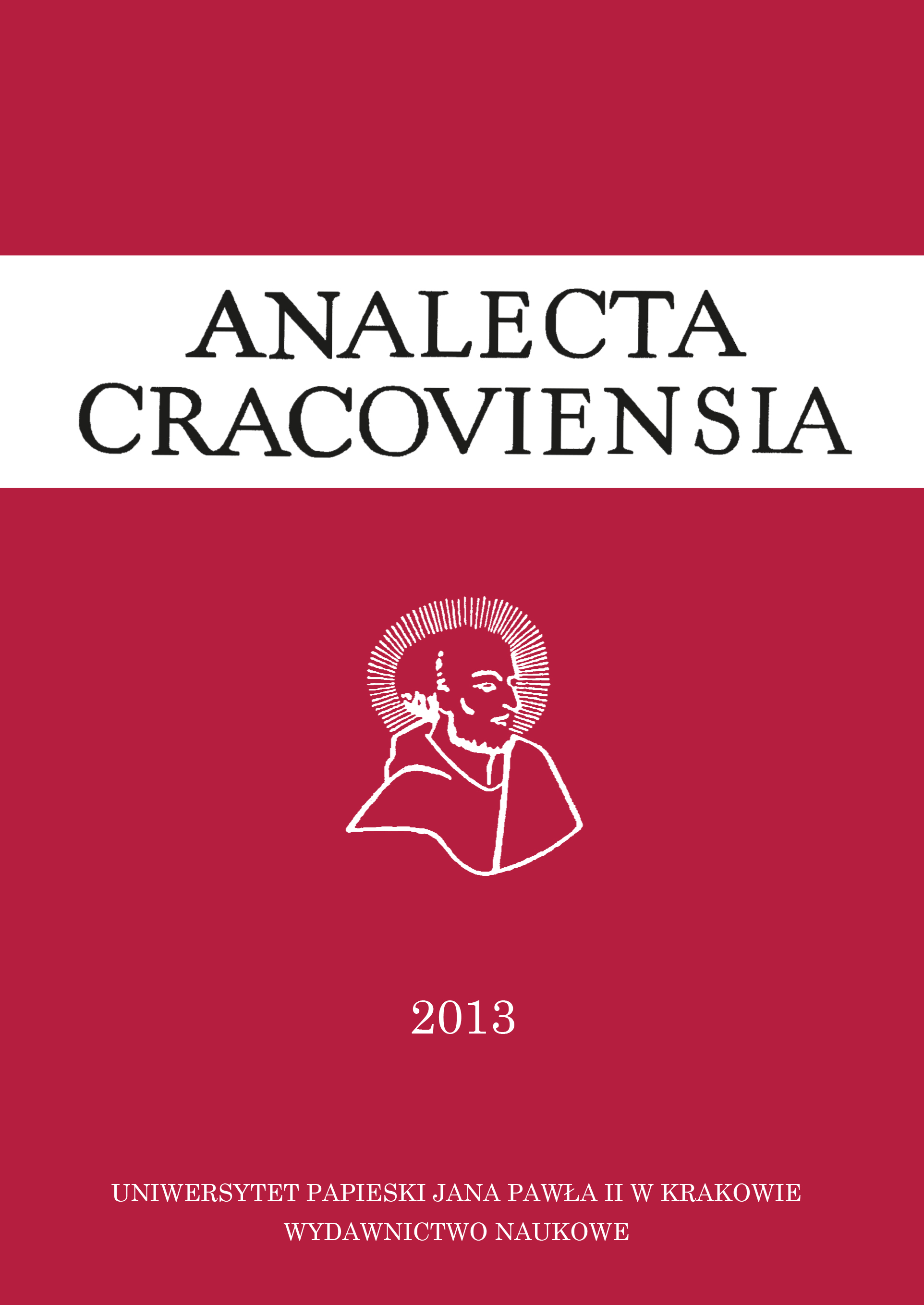Zespół witraży w kościele parafialnym w Mszance koło Gorlic. Przyczynek do dziejów witrażownictwa krakowskiego 2. ćwierci XX wieku
The stained glass in the parish church in Mszanka near Gorlice. Contribution to the study of Kraków stained glass art from the second quarter of the 20th century
Author(s): Andrzej LaskowskiSubject(s): Christian Theology and Religion, Visual Arts, Recent History (1900 till today)
Published by: Wydawnictwo Naukowe Uniwersytetu Papieskiego Jana Pawła II w Krakowie
Keywords: Stained glass art; 20th-century art; Jan Kusiak; Maksymilian Romańczyk; Teodor Zajdzikowski; S. G. Żeleński; Kraków;
Summary/Abstract: Windows in the parish church of the Holy Apostles Peter and Paul in Mszanka near Gorlice, which supplements the architecture of the church built in 1938–1940 following the design of Edward Okoń, an architect from Tarnów, comprises 12 stained glass: two figural in the chancel, eight geometrical with medallions in the nave and transept, and two with monograms on both sides of the main entrance. Although plain in the artistic sense, and in the case of the figural ones – mediocre, these stained glasses successfully complement the bright and orderly interior of the parish church. The inscriptions on two panels and existing archival sources inform us that the windows were created in 1938 in the Kraków workshop of Maksymilian Romańczyk. The archival documents describe the entire investment process leading to their creation and their repair which was necessary due to their deficient construction. This task was undertaken in 1949 by the renowned Kraków Stained Glass Company S. G. Żeleński, which is also described in detail in the historical records. Stained glass and primarily the archival materials preserved in Mszanka are excellent sources of many valuable details on stained glass workmanship in Poland in the second quarter of the 20th century, the division of tasks within stained glass workshops, the involvement of the clients, and on projects that the above-mentioned workshops were working on concurrently at that time – information which was previously unknown. In turn, the preserved company letterhead authorised with the original stamps provides useful information on the functioning of these types of workshops, their products and achievements. In quite a distinct manner, the letterhead also tells us a little about the history of the workshops. The above example confirms that works of art or archival material stored until this day in locations outside urban areas can valuably supplement and sometimes even alter our knowledge of stained glass art in Poland.
Journal: Analecta Cracoviensia. Czasopismo Uniwersytetu Papieskiego Jana Pawła II w Krakowie
- Issue Year: 2013
- Issue No: 45
- Page Range: 273-303
- Page Count: 31
- Language: Polish

